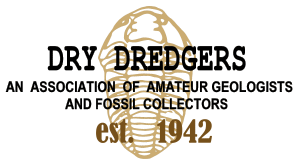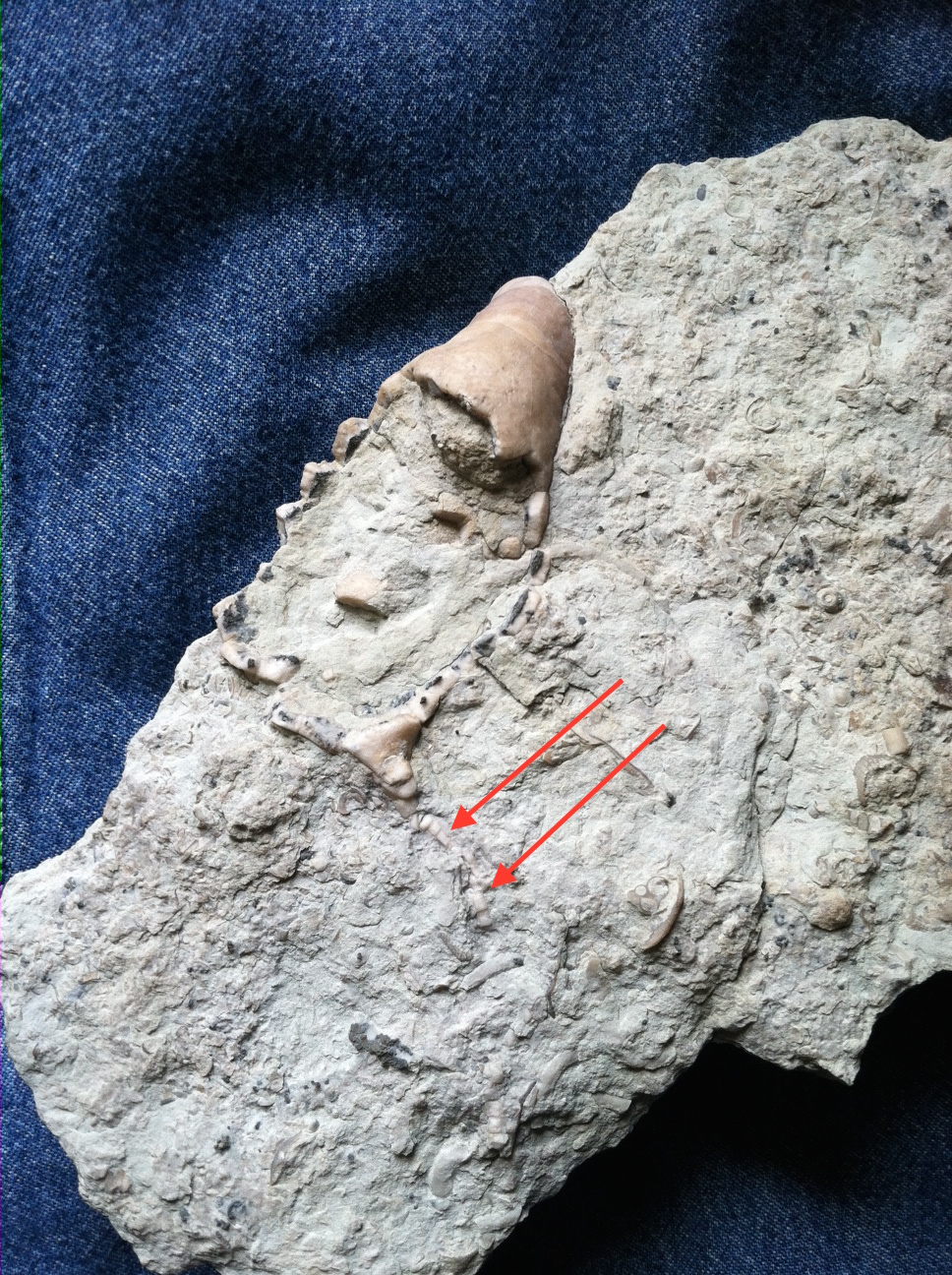Yup.
Admittedly, I do focus a lot of my blogs on a Silurian Massie Shale locality in Southeast Indiana. That’s because I collect there a lot. Many other collectors have visited the site a few times, but by far I am the most frequent repeat scavenger. In part, the lack of other frequent visitors is because the Silurian macro-fossil productivity goes through cycles: very brief periods of abundance, followed by very long periods of drought — most collectors miss the brief windows of abundance. And the primary finds are cystoids (see Figures 1 and 2), which one collector described as “a lump with two holes” and another as “sling-shot ammunition.” In spite of those negative opinions, I enjoy finding cystoids and am persistent, repeatedly visiting the site, over time (35+ years) accumulating of a large varied collection.
However, in this blog, I won’t be discussing a field trip there, but rather the donation of some of the unusual previously collected cystoids. Dating back to ~1980, there has been intense academic interest in the cystoid fauna from the Massie (formerly called the Osgood) Shale. Several Dry Dredgers (Bruce Gibson, Dan Cooper, me) donated a lot of echinoderm material to Harrell Strimple (University of Iowa) for a project which focused in part on describing new cystoid species we found. Since then, there have been several Massie Shale projects, in particular work done by Carl Brett and James Thomka (UC). A new project at the University of Tennessee (Colin Sumrall and Sarah Sheffield) involves examination and description of some of the unique specimens from my collection.
The most abundant cystoid found in the Massie Shale is Holocystites (see Figures 1 and 2). Over my 35+ years of collecting the site, I’ve found literally thousands of specimens. And probably cleaned at least three thousand of them.

Figure 1. Holocystites theca (2 inches tall) from Silurian Massie Shale of Southeast Indiana. Oral area is on top, short attachment stalk on the bottom.

Figure 2. Top-down view of Holocystites showing the pentagonal oral area (on right) and roundish anal opening (on left). Note the small but very well preserved disk-like pore opening between the oral and anal areas — this is believed to have been involved in fluid flow into and out of the cystoid.
Among all those Holocystites specimens, two are unique: one because the oral cover plates are still in place (Figure 3), and the other because the anal cover (pyramid) is still in place (Figure 4). These rare finds are of high interest to Colin Sumrall and Sarah Sheffield (University of Tennessee) because neither of these covers have been observed or described previously, though their existence was certainly suspected.

Figure 3. Top-down view of 1-inch tall Holocystites theca with oral cover plates in place (red arrow); the roundish anal opening is on the lower edge of the specimen.

Figure 4. Top-down view of 1.5-inch tall Holocystites theca with anal pyramid in place (red arrow); the pentagonal oral opening is to the top of the specimen.
A much rarer cystoid from the locality is the large Triamara (see Figure 5). Like all other cystoids I’ve seen from the Massie Shale, none have attached brachioles, so these structures have not been previously observed or described. Except in my collection are two partial specimens (see Figures 6 and 7), which have brachioles still in place. Over the years, I’ve collected hundreds of Triamara fragments and a couple dozen complete theca – and only these two examples of brachioles – rare finds that are of interest for study (University of Tennessee).

Figure 5. Large (3.5 inch) complete theca of Triamara. Oral area is on the right, thick attachment stalk is on the left.
An even rarer cystoid (see Figure 8) is undescribed, and as far as I know, no one else has even found a fragment. I’ve seen perhaps a dozen fragments and the two specimens shown in Figure 8, and even these two are not-quite-complete theca – in both, the oral area is absent.

Figure 8. Two nearly complete 3-inch theca of an undescribed cystoid species. Oral area (mostly missing in both specimens) is to the left, and the attachment base to the right.
This set of unusual specimens has been donated to the Cincinnati Museum Center so that they are available for study by University of Tennessee. If anyone else has unusual material from the Silurian Massie Shale, please let me know. Perhaps they too are unique and worthy of study by professionals.
Well, time for me to return to the Massie Shale to find something new!
Don Bissett

A long-time member of the Dry Dredgers, I’ve been collecting fossils ever since moving to Cincinnati in 1975 to work at P&G. I was introduced to fossil collecting by Bruce Gibson, another Dry Dredger and co-worker at P&G. Shortly after that, I met Dredger Dan Cooper. Both of them taught me a lot about the hobby. Ever since, I’ve been hooked on fossils.
My primary focus is collecting trilobites and echinoderms, though I often find myself accumulating a much wider assortment of fossils. Beyond the collecting hobby, I’ve also had the opportunity to work with professional paleontologists – extremely rewarding experiences. Some of those have been described in Dry Dredger Bulletin articles, MAPS (Mid-American Paleontology Society) articles, and technical publications. I plan to share more about collecting and professional interactions in my blog posts.Latest posts by Don Bissett (see all)
- Massie Shale Calymene - January 4, 2021
- Mississippian starfish - November 13, 2020
- Walcott-Rust Starfish - October 25, 2020
- Spathacalymene - September 20, 2020
- Penn Dixie Dig with the Experts 2018 - May 27, 2018







I live in Cumberland City, Tennessee, and would love to join your club.I have recently found some very large Bellerphon fossils as large as my hand,but do not know the species as of yet.Any information would be most welcome.
Dan: Glad to have you join the Dry Dredgers. Can you send some pictures of the fossils you’ve found? And any information on what geologic era or formation they are from? That will help with identification. Thanks. Don (donbissett@gmail.com)
Dan,
If you found the Bellerophontid in the Cincinnati Arch, you can download the USGS 1066-O publication to identify the species. Here’s the link.
https://pubs.er.usgs.gov/publication/pp1066O
Thanks also for your interest in joining our group. To join, print and fill out the application form and the field trip liability waiver and mail them with your dues. Here’s a link to the forms and dues amounts.
http://drydredgers.org/register.htm
If you can tell us what formation and location the fossil was from we can perhaps do a better job of helping with the identification.
Best Wishes,
Bill Heimbrock
Webmaster, drydredgers.org